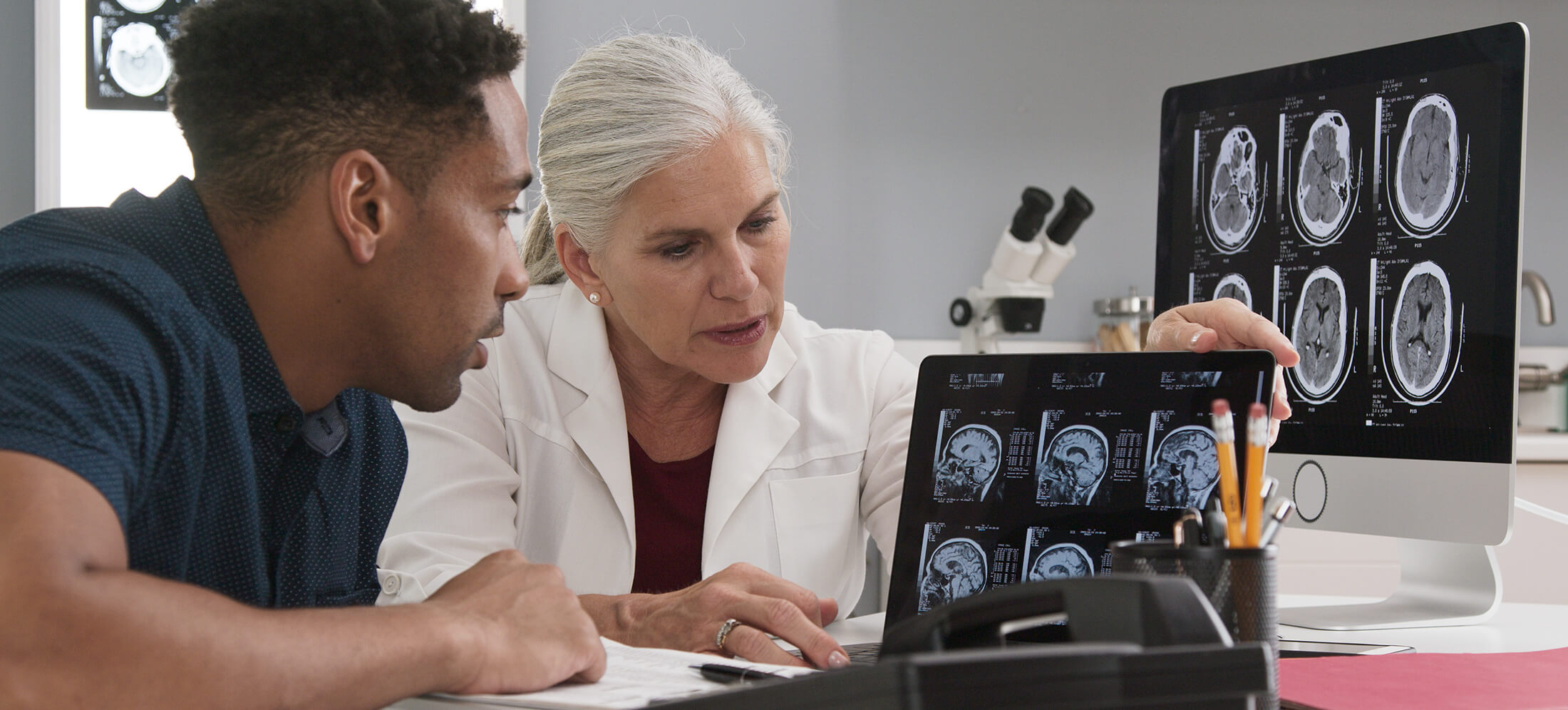How to Become a Patient
Ready to become a patient? Start by calling our office at (317)-848-6000.
Want to know more about our process? Read on to learn how we help patients get started with our services.
We like to get familiar with your case and review your medical history before we sit down for an initial consultation and examination. Our comprehensive intake exam is the first step in finding the root cause of your health concerns so that we can create a personalized care plan just for you.
We will start with an in-depth functional neurological exam and nutritional assessment to discover factors that may be affecting your health. After the initial consultation, we perform a comprehensive functional neurology exam including orthopedic, spinal, physical, and neurological assessments with our industry-leading equipment.
Detailed Examination
Our initial examination is detailed for a reason. It gives us insights into your current health status and offers valuable information about potential treatment plans. Some of the evaluation techniques we use are:
- Video Nystagmography
- Comprehensive Orthopedic and Musculoskeletal Examination
- Dynamic Posturography
- Vestibulo-Ocular Testing
- Optokinetic Nystagmus Testing
- Pursuit and Saccade Testing of the visual system
- Computerized Timing and Planning examination
- Vestibular and Cerebellum Testing
- Coordination Assessment
- Mental Status and Cognitive Evaluations
- Gait Analysis and Motor Testing to check for muscular imbalances
- Sensory Perception Tests including cranial nerves and peripheral nerves, motor reflexes, primitive reflexes and balance
Health Insurance
WHAT DOES INSURANCE COVER?
We operate from two core office policies:
- Our mission is to help as many people as possible regain their health and meet their goals.
- We keep care as affordable as possible for everyone.
Insurance may cover some of your care. We will explain how on your first visit. We will gladly pre-verify your insurance prior to your first visit so you know exactly what your coverage is.
Please note: Medicare does not cover nutritional care, labs, or supplements.
Get to Know Neurohealth
NeuroHealth specializes in neurorehabilitation – an array of treatments for people who have vertigo, migraines, post-concussion syndrome, or other neurological disorders.
Often, our patients come to us in search of a diagnosis for symptoms like “brain fog,” difficulty concentrating, or irregular eye movements. We use sophisticated diagnostic tools to pinpoint the underlying causes of our patients’ symptoms then develop a plan of care. We also have a fast-track concussion-recovery program – NeuroReset – that can help alleviate concussion symptoms in five days.
We’re based in Indianapolis, but patients travel to our office from throughout the state because of our innovative treatment techniques. For more than a decade, we’ve been helping people build strength, regain mobility, and feel well again.
Our Unique Approach
Our Indianapolis neurorehabilitation clinic specializes in treatments for people struggling with a variety of neurological disorders, including:
- Vertigo
- Migraines
- Traumatic brain injury (TBI)
- Post-concussion syndrome
We offer a comprehensive, patient-specific neurological rehabilitation solution that doesn't rely on drugs or surgery.
Our Indianapolis neurology rehab office specializes in dealing with chronic, unresolved, and often painful neurological health conditions. As a result, many of our patients come to us after they’ve been unable to find relief elsewhere, despite exhaustive testing and exams.
Diagnostics
At NeuroHealth, the first step is often a Discovery Day analysis, which enables us to determine the best course of action to optimize your brain health. This comprehensive evaluation provides insight into the genetic, metabolic, immune, and psychological factors that may be hindering your recovery. When we understand your unique symptoms, we can develop a dynamic, tailored treatment program to address your condition.
Treatment Tools
Neuroplasticity is the ability of the brain to grow, adapt, and reorganize. Our aim is to create the optimal environment for growth and plasticity as you complete your therapy program. We accomplish this by using an array of proven therapies and tools designed to stimulate and retrain the brain.
The Path to Wellness Starts Here
If you’re ready to improve your brain health and recover from your neurological injury or illness, contact us to book an appointment now using the button below.

